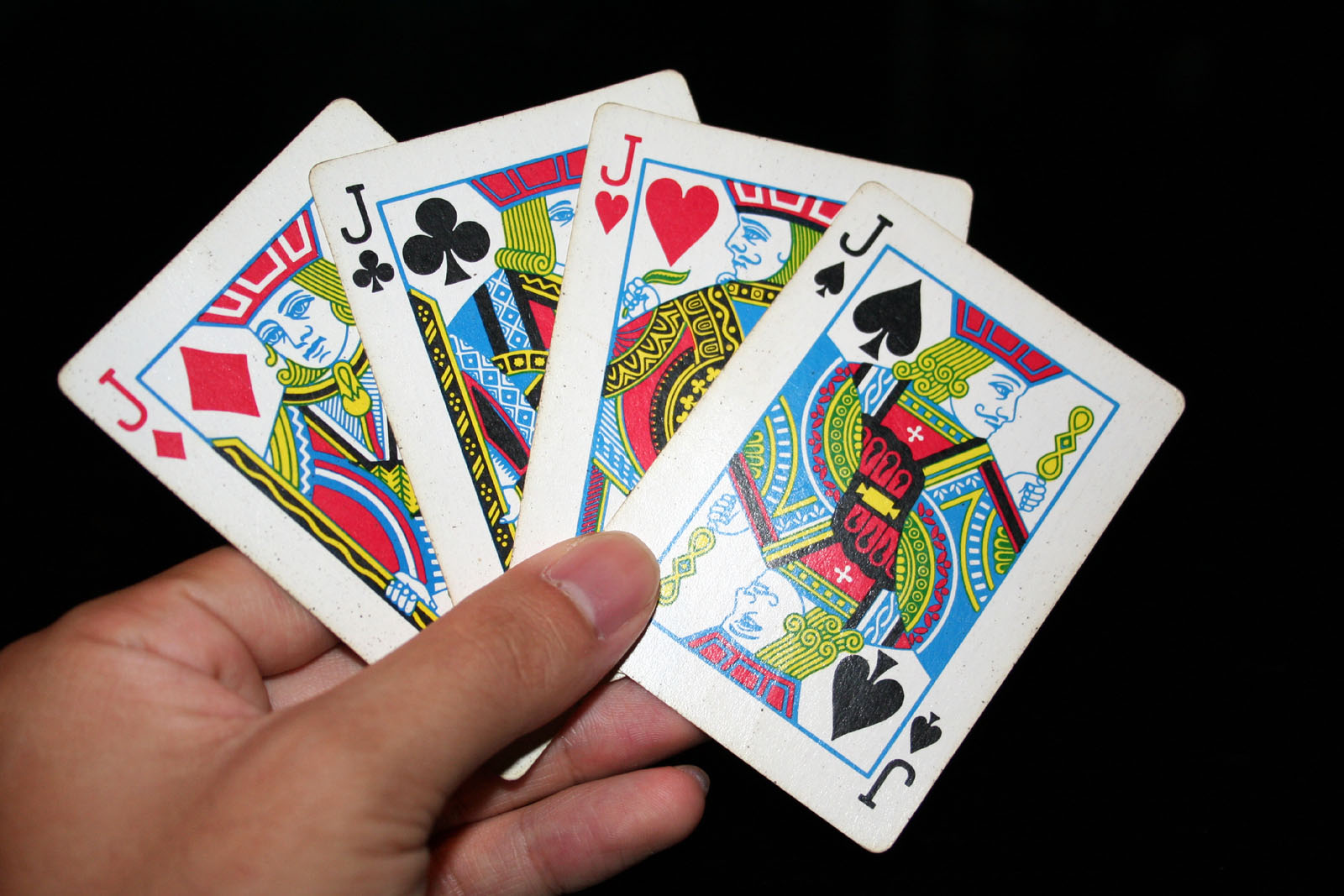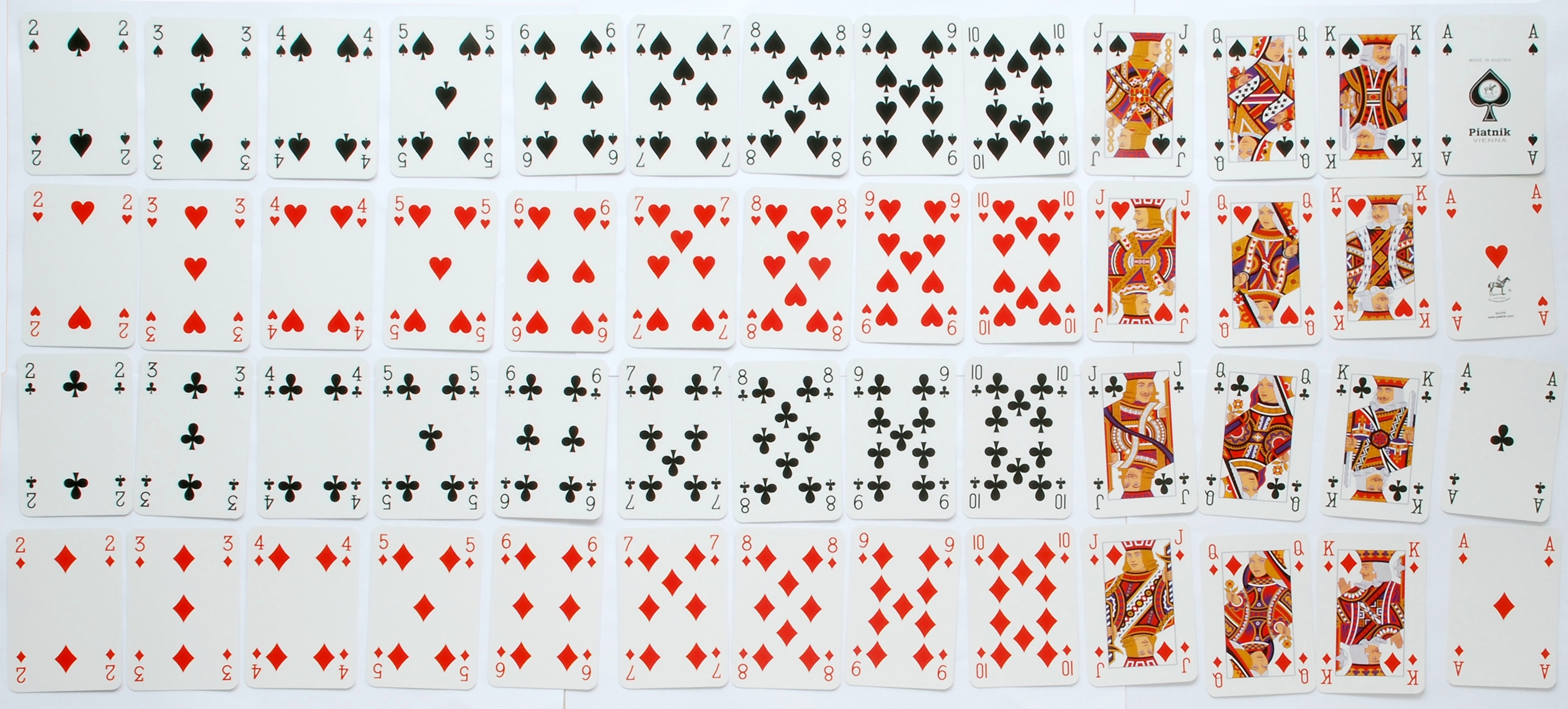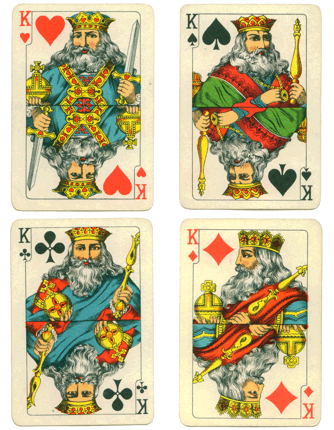|
Hearts (card Suit)
Hearts (french: Cœur, german: Herz) is one of the four suits in playing cards of both the French deck and the German deck. However, the symbol is slightly different: in a French deck and in a German-suited deck. In Bridge, for which in Germany the French deck is common, it is called by its French name, ''Cœur''. In games using German-suited cards the suit of Hearts is often called "Red" (''Rot''). In the game of Watten, the King of Hearts is the highest Trump. This suit was invented in 15th century Germany and is a survivor from a large pool of experimental suit signs created to replace the Latin suits. Name The origin of the term "heart" to describe the symbol, which only very marginally resembles a true heart, is not known. In general, equivalents in other languages also mean "heart". File:Bay herz.svg, The heart in German suited cards File:Naipe copas.png, The heart in French suited cards Characteristics The heart typically has a form of cardioid, the lower par ... [...More Info...] [...Related Items...] OR: [Wikipedia] [Google] [Baidu] |
52-card Deck
The standard 52-card deck of French-suited playing cards is the most common pack of playing cards used today. In English-speaking countries it is the only traditional pack used for playing cards; in many countries of the world, however, it is used alongside other traditional, often older, standard packs with different suit systems such as those with German-, Italian-, Spanish- or Swiss suits. The most common pattern of French-suited cards worldwide and the only one commonly available in Britain and the United States is the English pattern pack. The second most common is the Belgian-Genoese pattern, designed in France, but whose use spread to Spain, Italy, the Ottoman Empire, the Balkans and much of North Africa and the Middle East.''Pattern Sheet 80'' at i-p-c-s.org. Retrieved 23 August 2020. In addition to those, there are other major in ... [...More Info...] [...Related Items...] OR: [Wikipedia] [Google] [Baidu] |
Queen (playing Card)
The queen is a playing card with a picture of a queen on it. In many European languages, the king and queen begin with the same letter so the latter is often called ''dame'' (lady) or variations thereof. In French playing cards, the usual rank of a queen is between the king and the jack. In tarot decks, it outranks the knight which in turn outranks the jack. In the Spanish deck and some Italian decks, the Queen does not exist and the Knight appears in them instead, with the same role and value. In several card games, including the middle eastern Trex and French Barbu, the queen is a major card to avoid taking, with each queen taken inflicting a penalty on the player. Similarly, in Hearts, the queen of spades is to be avoided, and is called a variety of unsavoury names. In the Paris pattern, each court card is identified as a particular historical or mythological personage as follows: Cultural references Regarding the anonymous nursery rhyme, " The Queen of Hearts" (publis ... [...More Info...] [...Related Items...] OR: [Wikipedia] [Google] [Baidu] |
Jack (playing Card)
A Jack or Knave, in some games referred to as a bower, is a playing card which, in traditional French and English decks, pictures a man in the traditional or historic aristocratic or courtier dress, generally associated with Europe of the 16th or 17th century. The usual rank of a jack is between the ten and the queen. History The earliest predecessor of the knave was the (second or under-deputy) in the Mamluk card deck. This was the lowest of the three court cards and like all court cards was depicted through abstract art or calligraphy. When brought over to Italy and Spain, the was made into an infantry soldier or page ranking below the knight card. In France, where the card was called the valet, the queen was inserted between the king and knight. The knight was subsequently dropped out of non-Tarot decks leaving the valet directly under the queen. The king-queen-valet format then made its way into England. As early as the mid-16th century the card was known in England a ... [...More Info...] [...Related Items...] OR: [Wikipedia] [Google] [Baidu] |
Ten Of Hearts
The standard 52-card deck of French-suited playing cards is the most common pack of playing cards used today. In English-speaking countries it is the only traditional pack used for playing cards; in many countries of the world, however, it is used alongside other traditional, often older, standard packs with different suit systems such as those with German-, Italian-, Spanish- or Swiss suits. The most common pattern of French-suited cards worldwide and the only one commonly available in Britain and the United States is the English pattern pack. The second most common is the Belgian-Genoese pattern, designed in France, but whose use spread to Spain, Italy, the Ottoman Empire, the Balkans and much of North Africa and the Middle East.''Pattern Sheet 80'' at i-p-c-s.org. Retrieved 23 August 2020. In addition to those, there are other major in ... [...More Info...] [...Related Items...] OR: [Wikipedia] [Google] [Baidu] |
Nine Of Hearts
The standard 52-card deck of French-suited playing cards is the most common pack of playing cards used today. In English-speaking countries it is the only traditional pack used for playing cards; in many countries of the world, however, it is used alongside other traditional, often older, standard packs with different suit systems such as those with German-, Italian-, Spanish- or Swiss suits. The most common pattern of French-suited cards worldwide and the only one commonly available in Britain and the United States is the English pattern pack. The second most common is the Belgian-Genoese pattern, designed in France, but whose use spread to Spain, Italy, the Ottoman Empire, the Balkans and much of North Africa and the Middle East.''Pattern Sheet 80'' at i-p-c-s.org. Retrieved 23 August 2020. In addition to those, there are other major in ... [...More Info...] [...Related Items...] OR: [Wikipedia] [Google] [Baidu] |
Eight Of Hearts
The standard 52-card deck of French-suited playing cards is the most common pack of playing cards used today. In English-speaking countries it is the only traditional pack used for playing cards; in many countries of the world, however, it is used alongside other traditional, often older, standard packs with different suit systems such as those with German-, Italian-, Spanish- or Swiss suits. The most common pattern of French-suited cards worldwide and the only one commonly available in Britain and the United States is the English pattern pack. The second most common is the Belgian-Genoese pattern, designed in France, but whose use spread to Spain, Italy, the Ottoman Empire, the Balkans and much of North Africa and the Middle East.''Pattern Sheet 80'' at i-p-c-s.org. Retrieved 23 August 2020. In addition to those, there are other major in ... [...More Info...] [...Related Items...] OR: [Wikipedia] [Google] [Baidu] |
Seven Of Hearts
The standard 52-card deck of French-suited playing cards is the most common pack of playing cards used today. In English-speaking countries it is the only traditional pack used for playing cards; in many countries of the world, however, it is used alongside other traditional, often older, standard packs with different suit systems such as those with German-, Italian-, Spanish- or Swiss suits. The most common pattern of French-suited cards worldwide and the only one commonly available in Britain and the United States is the English pattern pack. The second most common is the Belgian-Genoese pattern, designed in France, but whose use spread to Spain, Italy, the Ottoman Empire, the Balkans and much of North Africa and the Middle East.''Pattern Sheet 80'' at i-p-c-s.org. Retrieved 23 August 2020. In addition to those, there are other major in ... [...More Info...] [...Related Items...] OR: [Wikipedia] [Google] [Baidu] |
Six Of Hearts
The six of hearts is a playing card in the standard 52-card deck. Six of Hearts may also refer to: * Six of Hearts (character), a fictional character in ''The Lab'' and 'Remote Control" * ''Six of Hearts'' (EP), a 1997 jazz album See also * or * * Two of Hearts (other) * Three of Hearts (other) * Jack of Hearts (other) * Queen of Hearts (other) * King of Hearts (other) The king of hearts is a playing card in the standard 52-card deck. King of Hearts may also refer to: Games * The King of Hearts Has Five Sons, card game that may have been a precursor to Cluedo Books * King of Hearts (''Alice's Adventures i ... * Ace of Hearts (other) {{disambiguation ... [...More Info...] [...Related Items...] OR: [Wikipedia] [Google] [Baidu] |
Five Of Hearts
Hearts (french: Cœur, german: Herz) is one of the four suits in playing cards of both the French deck and the German deck. However, the symbol is slightly different: in a French deck and in a German-suited deck. In Bridge, for which in Germany the French deck is common, it is called by its French name, ''Cœur''. In games using German-suited cards the suit of Hearts is often called "Red" (''Rot''). In the game of Watten, the King of Hearts is the highest Trump. This suit was invented in 15th century Germany and is a survivor from a large pool of experimental suit signs created to replace the Latin suits. Name The origin of the term "heart" to describe the symbol, which only very marginally resembles a true heart, is not known. In general, equivalents in other languages also mean "heart". File:Bay herz.svg, The heart in German suited cards File:Naipe copas.png, The heart in French suited cards Characteristics The heart typically has a form of cardioid, the lower par ... [...More Info...] [...Related Items...] OR: [Wikipedia] [Google] [Baidu] |
Four Of Hearts
The standard 52-card deck of French-suited playing cards is the most common pack of playing cards used today. In English-speaking countries it is the only traditional pack used for playing cards; in many countries of the world, however, it is used alongside other traditional, often older, standard packs with different suit systems such as those with German-, Italian-, Spanish- or Swiss suits. The most common pattern of French-suited cards worldwide and the only one commonly available in Britain and the United States is the English pattern pack. The second most common is the Belgian-Genoese pattern, designed in France, but whose use spread to Spain, Italy, the Ottoman Empire, the Balkans and much of North Africa and the Middle East.''Pattern Sheet 80'' at i-p-c-s.org. Retrieved 23 August 2020. In addition to those, there are other major in ... [...More Info...] [...Related Items...] OR: [Wikipedia] [Google] [Baidu] |
Three Of Hearts
Hearts (french: Cœur, german: Herz) is one of the four suits in playing cards of both the French deck and the German deck. However, the symbol is slightly different: in a French deck and in a German-suited deck. In Bridge, for which in Germany the French deck is common, it is called by its French name, ''Cœur''. In games using German-suited cards the suit of Hearts is often called "Red" (''Rot''). In the game of Watten, the King of Hearts is the highest Trump. This suit was invented in 15th century Germany and is a survivor from a large pool of experimental suit signs created to replace the Latin suits. Name The origin of the term "heart" to describe the symbol, which only very marginally resembles a true heart, is not known. In general, equivalents in other languages also mean "heart". File:Bay herz.svg, The heart in German suited cards File:Naipe copas.png, The heart in French suited cards Characteristics The heart typically has a form of cardioid, the lower par ... [...More Info...] [...Related Items...] OR: [Wikipedia] [Google] [Baidu] |




